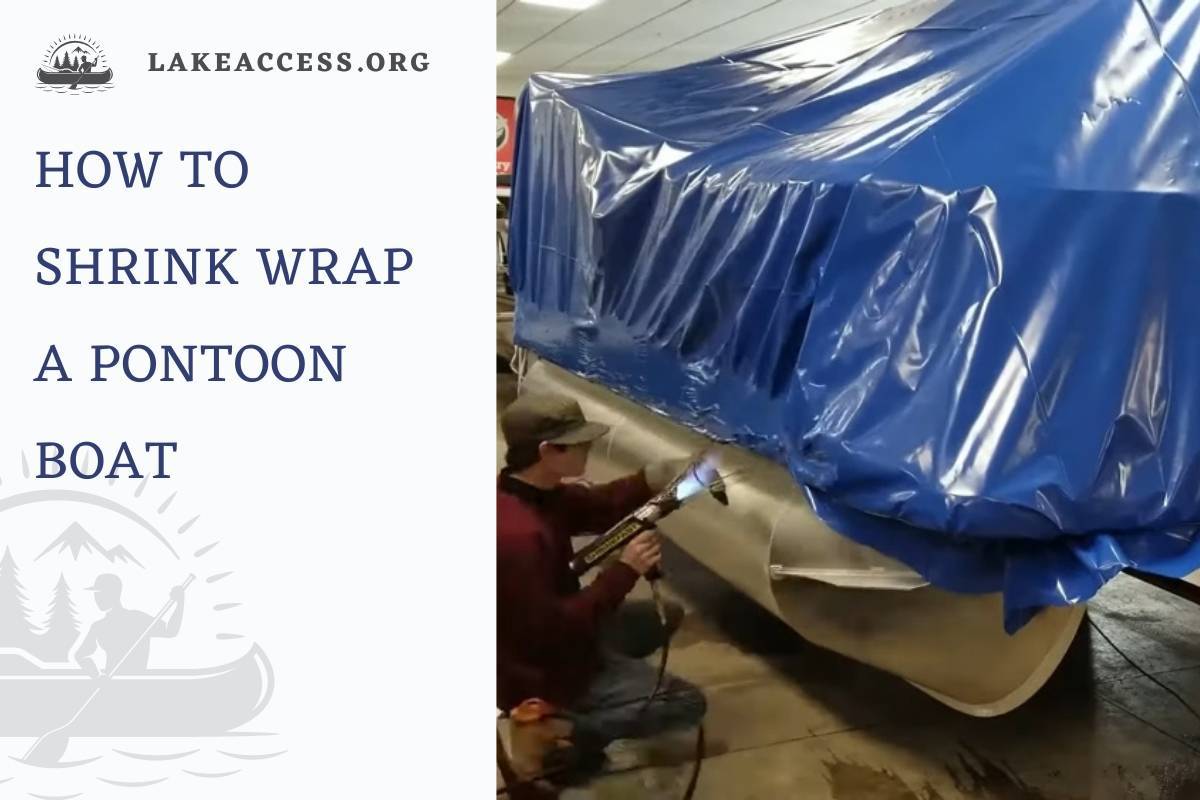Shrink-wrapping is a versatile and effective method of safeguarding your prized possessions, particularly your boats. It’s a process that involves using a specialized film that, when heated, shrinks and tightly adheres to the object it covers. In this comprehensive guide, we’ll delve into the intricacies of shrink-wrapping, its benefits, and how you can do it yourself. By the end, you’ll be well-versed in the art of boat shrink-wrapping and ready to take on the task with confidence.
The Power of Shrink-Wrap
Shrink wrap is a remarkable material that serves multiple purposes. Its primary function is to shield items from shipping, storage, or display rigors. The film itself is commonly made from food-grade materials like polyethylene, PVC, and polypropylene, which can even be customized with logos or designs. This makes it a popular choice not only for protection but also for branding purposes.
Shrink Wrapping a Pontoon Boat
What You Will Need
Shrink-wrapping your boat is a task that can be undertaken without the need for professional assistance. To get started, you’ll require a shrink-wrap kit, which can be conveniently found at most hardware stores. This kit usually includes a staple gun, a wooden piece, a belly band, a tensioning tool, and a disposable film knife for cutting the shrink wrap. Additionally, you’ll need a propane-fired heat tool, a ladder for easy access, and a friend to assist you with some steps of the process.
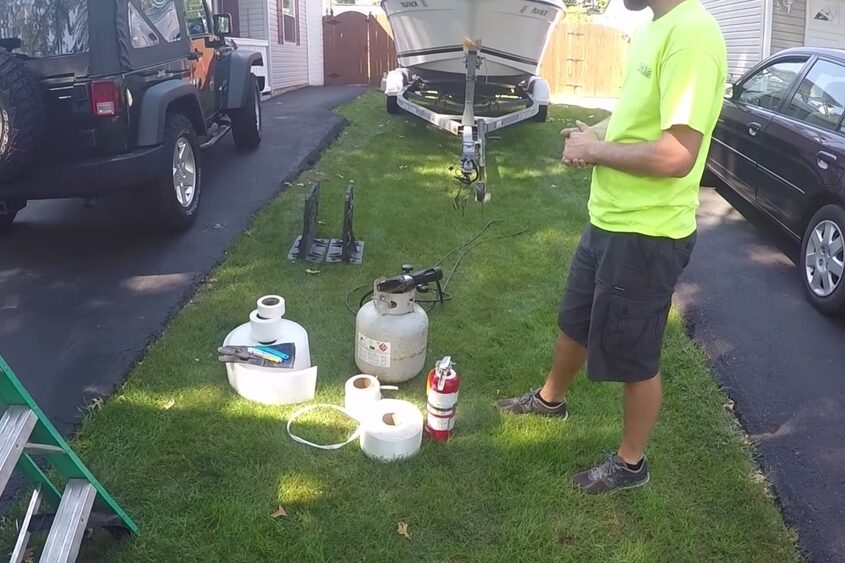
Getting Your Pontoon Boat Ready for Shrink-Wrapping
Before you start the shrink-wrapping process for your pontoon boat, it’s important to take some essential steps:
- Remove Accessories: Begin by taking down any accessories attached to your boat, such as the Bimini top. Store these accessories safely inside your boat to keep them protected.
- Thoroughly Clean Your Boat: Make sure your boat’s surfaces are clean and free from any oils or dirt that could prevent the shrink wrap from sticking properly. A clean surface ensures a better seal.
- Inspect for Hazards: Check the boat’s exterior for any sharp objects or protrusions that might puncture the shrink wrap during the wrapping process. Removing or addressing these hazards is crucial to prevent damage.
- Clear the Interior: Take out seats and any other items from inside the boat that you don’t want to be covered in plastic. This step not only gives you more space to work but also helps you accurately measure the boat’s length for the shrink-wrapping process.
Wrapping the Boat
With your boat prepped and ready, it’s time to dive into the shrink-wrapping process:
1. Frame Construction: If your kit includes buckles, attach them to your boat. Next, create a framework using nylon strapping. This framework will provide support for the shrink wrap and help it conform to the boat’s shape.
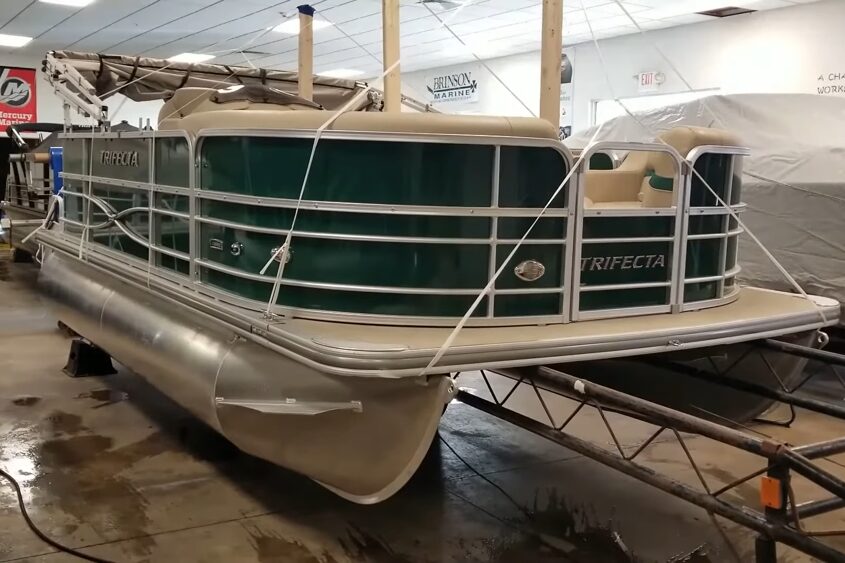
2. Wrap It Up: Gently and carefully wrap the entire pontoon boat in the shrink-wrap material. Ensure that you cover all areas thoroughly, leaving no part exposed.
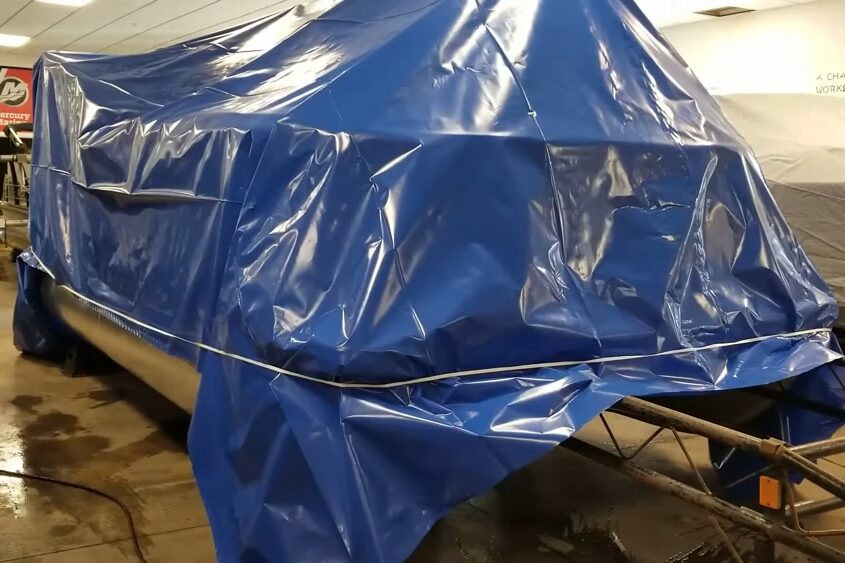
3. Tension Bands: Utilize the provided tension bands to secure the wrap tightly onto the boat. This step is crucial for a snug fit and to prevent the wrap from coming loose.
4. Apply Heat: Fire up the propane-fired heat tool and begin applying heat to the shrink wrap. As the heat is applied, the shrink wrap will start to contract and conform tightly to the contours of your boat. Continue this process until the shrink wrap snugly hugs your boat’s shape.
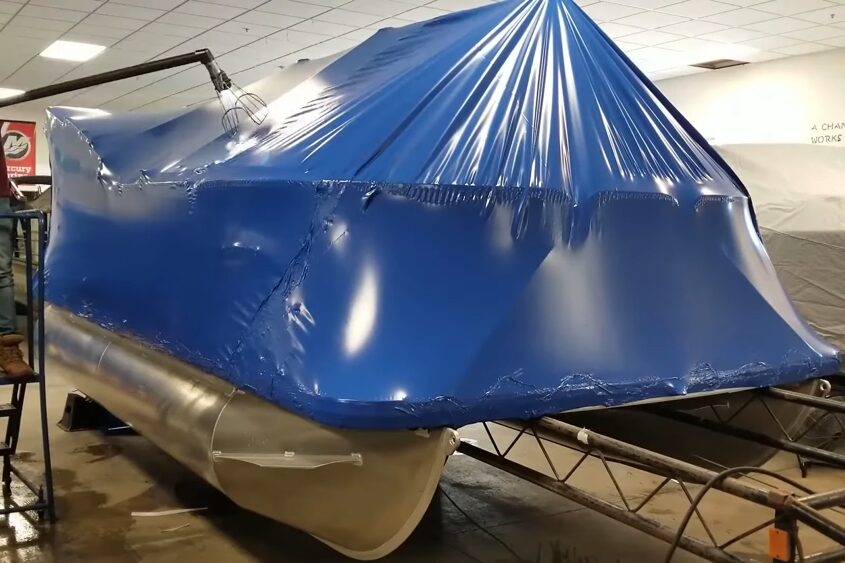
5. Seal Any Holes: While applying the shrink wrap, keep an eye out for any holes or cracks. Seal these openings with duct tape or waterproof tape as you go. This sealing step is essential to prevent water from seeping into the wrapped area, ensuring your boat stays dry and protected.
Considerations and Safety
It’s important to note that shrink wrap is not the most flexible material, and it can generate static electricity, posing a shock hazard. Careful application is essential to avoid damage to your boat or potential injuries. If you’re unsure about the process, it’s advisable to seek professional assistance.
Benefits of Shrink-Wrapping
Using shrink wrap on your boat comes with several advantages:
- Protection: It safeguards your boat’s gel coat or paint job from damage, theft, and the elements.
- Transportation: Shrink wrap is commonly used during boat transportation to prevent scratches and damages.
- Storage: It keeps your boat safe during off-season storage, protecting it from snow, ice, and wind.
Conclusion
In conclusion, shrink-wrapping your boat can be a worthwhile investment in protecting your valuable asset. While it may require some effort and attention to detail, the benefits in terms of protection and peace of mind are well worth it. Whether you choose to take the DIY route or enlist professional help, knowing how to properly shrink-wrap your boat is a valuable skill for any boat owner.
FAQs
How Long Does a Pontoon Wrap Last?
A well-done pontoon wrap can last up to seven years, offering long-term protection. In contrast, shrink wrap typically lasts around six months due to its thinner material. Properly folding and storing your pontoon wrap can extend its lifespan.
Can you shrink-wrap a boat by yourself?
Yes, you can shrink-wrap a boat by yourself with the help of a DIY boat wrap kit. This is a great way to protect your boat when it’s not in use. You can also use shrink wrap to weatherize irregular-shaped objects such as boats or RVs. Pro-Tect uses heat shrink film to wrap boats and other products. The vessel or product can be transported in its containment, saving money and labor.
Why Is Shrink Wrap Necessary?
When shrink wrap is used on a boat, it provides several benefits. First and foremost, it helps protect the gel coat or paint job from damage. It can also help prevent theft, making it more difficult for thieves to access the boat. In addition, shrink wrap can provide security in situations with high winds, rain, snow, and dirt. Boat owners often use shrink wrap during transportation, but it can also be used in storage.
What’s the downside to shrink wrap?
The downside of shrink wrap is that it is not very flexible, making it difficult to wrap a pontoon boat. Also, shrink wrap creates a lot of static electricity, creating a shock hazard. Shrinkwrapping may cause more harm than good if the shrink wrap is not applied correctly. You could damage the boat or injure yourself if you are not careful.
What is the material used to shrink-wrap boats?
The material used to shrink-wrap boats is typically PVC plastic, which can be bought in rolls and cut to size at the hardware store. The film comes in various thicknesses, but all are measured in mils. The thicker the plastic, the more protection it offers against outside elements.

